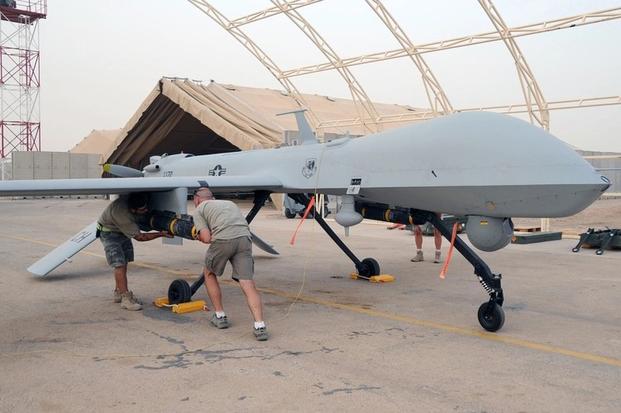Drone warfare promised a kind of clean detachment. Pilots and sensor operators often sit in air-conditioned trailers half a world away from the dust and heat of battle. They commute from suburban homes, stop for a coffee, and then step into missions that can mean life or death for people in Afghanistan, Iraq, Syria, or elsewhere. Yet that very distance, paradoxically, creates its own form of trauma. Operators watch lives unfold in real time before ending them in an instant. They witness death on a screen that captures every detail, which can also be replayed. It is a form of fighting that removes physical risk but leaves moral and psychological burdens that studies now show can rival those faced by soldiers on the ground.
The Disconnect Of Remote Warfare
The moral weight of remote warfare comes from the contradiction between safety and violence. Traditional combat stress is tied to the fear of being injured, killed, or captured. Drone operators are not generally in danger of return fire but still live with the knowledge that their keystrokes kill. Unlike bomber pilots of earlier eras, they do not drop ordnance and fly away. Due to their distance from the battlefield drone operators are generally not viewed as courageous, but drone missions require crews to stay on target after the strike, and to watch in close detail as the blast rips through a house or a car, to see the survivors carried away bleeding, or bodies gathered into blankets.
Psychologists describe this not simply as stress but as moral injury – the inner wound caused when one’s actions violate deeply held values. A study on drone operators in noted 4.3% of Air Force drone operators who participated reported experiencing moderate to severe PTSD symptoms. The rate of PTSD shown in this study was lower than those reported among servicemembers returning from deployment (10-18%), but higher than the reported rates of drone operator PTSD according to military records (<1%).
What Research Shows
USAF data now shows remotely piloted aircraft (RPA) crews carry a distinct psychological load: large-scale Air Force studies report elevated burnout, psychological distress, and sleep problems across RPA career fields. Evidence from the Medical Surveillance Monthly Report found meaningful mental health diagnoses and counseling utilization in the Air Force RPA population, establishing a baseline picture of need rather than the “stress-free” caricature often assumed. A separate system analysis of USAF drone operators documents clinically significant PTSD symptoms in a subset, but emphasizes that contributors like operational tempo, shift work, and continual exposure to imagery are the factors that map onto their moral distress and cognitive fatigue more than fear-based trauma.
A 2023 narrative review synthesizing clinical and qualitative work describes the core pattern succinctly: persistent surveillance of human lives, strike decisions made at a distance, and lingering guilt afterward produce moral injury, exhaustion, and insomnia even in the absence of direct physical danger.

Human Stories Behind The Numbers
The research comes alive in the testimony of operators themselves. Brandon Bryant, an Air Force drone operator, described leaving the service haunted by the images he had seen. He recalled being unable to warn a convoy of a suspected IED. He remembered firing on a target only for what he believed to be a child to run outside just prior to impact. The memory left him with recurring nightmares, deep depression, and feelings of moral collapse. His story forced the public to confront the reality that pushing a button from thousands of miles away does not insulate the operator from trauma.
Other accounts echo the same themes. One former operator described how the work felt in ways no training could anticipate: crews would sit for hours watching people and their routines on screen, pull the trigger, and remain to watch the aftermath, returning afterward to suburban life and an inability to talk about what they had seen. Michael Haas, a former senior airman, told a reporter that they developed colorful, distancing language for targets and later struggled with numbness and guilt once the mission ended.
A Different Kind Of Trauma
Unlike conventional PTSD, which often centers on reliving moments of mortal danger, drone-related trauma stems from guilt, disassociation, and the relentless monotony of remote combat. Operators describe their lives as a cycle of seeing, killing, and watching, followed by a commute home to neighborhoods far removed from war. The surreal contrast between killing abroad and domestic normalcy intensifies the psychic toll.
Standard treatments for PTSD – grounded in confronting fear responses – do not fully fit drone crews. Instead, care must address moral injury and the psychological whiplash of living two lives at once. Perhaps routine after-action counseling sessions should be implemented, not just for those in combat zones but also for remote operators. Mandatory rotation schedules could also limit exposure, as some drone operators have logged thousands of hours in combat roles without reprieve.
Rethinking Responsibility in Remote War
The hidden wounds of drone operators complicate the narrative that remote war is clean or low-cost. The operators themselves still pay a price measured in moral conflict and psychological scars rather than physical ones. They show the human mind cannot simply compartmentalize violence because of distance.
As drones become more central to American warfare, the military faces a choice: treat these operators as ordinary servicemembers who happen to sit in safer places, or acknowledge they fight in a new kind of war that demands new forms of support. The evidence points toward the latter. Unless moral injury is addressed openly and systematically, drone operators will remain the quiet casualties of a technology designed to keep them safe.
















